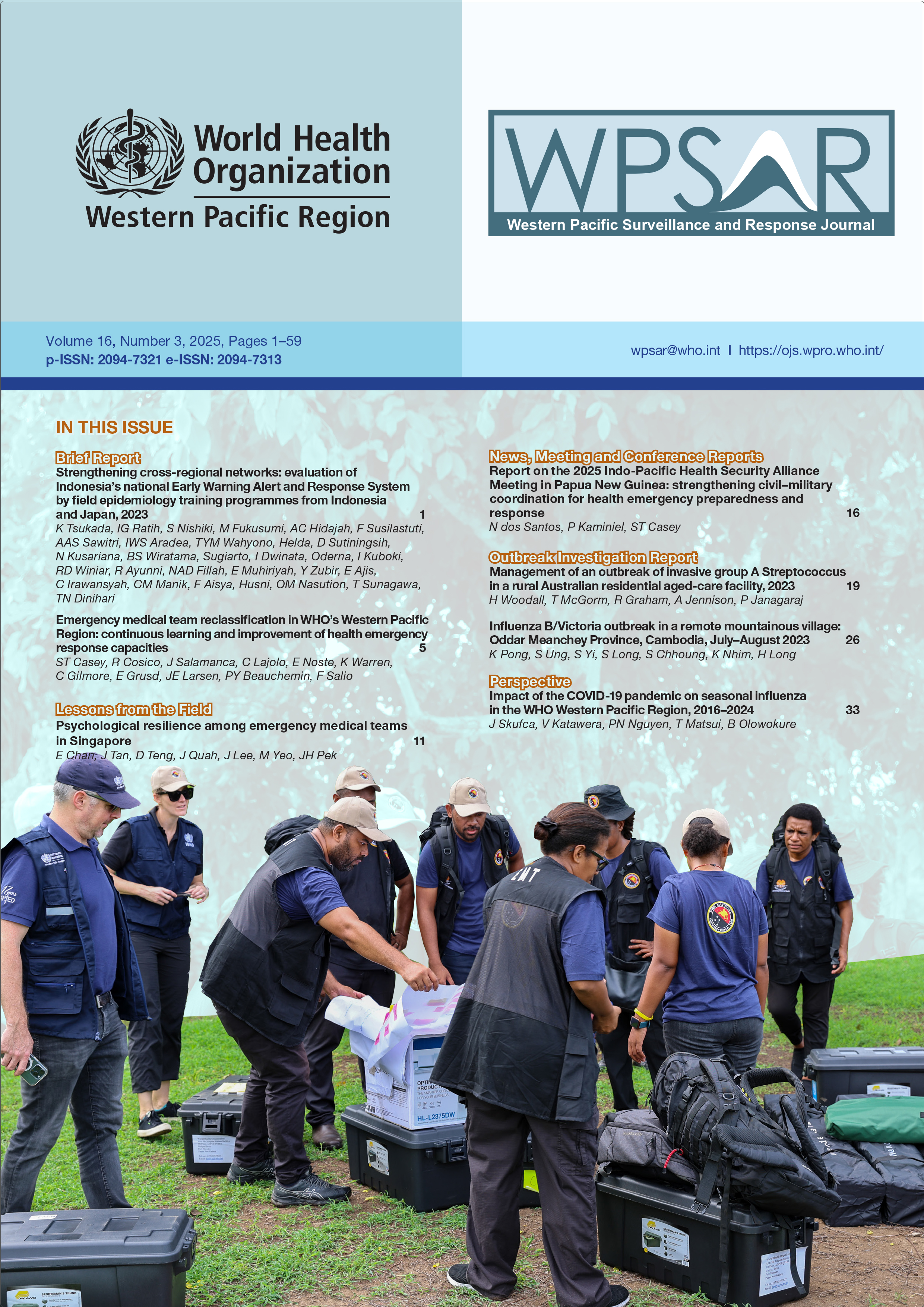Psychological resilience among emergency medical teams in Singapore
DOI:
https://doi.org/10.5365/wpsar.2025.16.3.1180Keywords:
disasters, emergency responders, mass casualty incidents, psychological resilienceAbstract
Problem: Emergency medical teams (EMTs) responding to mass casualty incidents attend to casualties in a chaotic, high-pressure and resource-limited environment that is vastly different from their day-to-day work. The nature of mass casualty incidents and the work environment can impact psychological resilience, but the psychological resilience of members of EMTs has not been evaluated.
Context: In Singapore, EMTs are deployed from public hospitals, polyclinics and the Singapore Red Cross to disaster sites, where they triage, stabilize and treat casualties before evacuating them to public hospitals for further management.
Action: Twenty-four members of EMTs responded to a cross-sectional survey based on a psychological resilience tool developed for health-care rescuers involved in mass casualty incidents to evaluate their psychological resilience after a full-scale exercise involving an aviation accident. Respondents completed a psychological resilience tool that was developed by experts in disaster work and research using a modified Delphi approach. There were 27 items across eight domains: optimism, altruism, preparations for disaster rescue, social support, perceived control, self-efficacy, coping strategies and positive growth.
Outcome: The key observations from the survey were that (i) staff demonstrated a strong sense of altruism and had good social support; (ii) staff were not confident about their preparedness, and this led to a lack of optimism, perceived control and ability to deal with emotions; and (iii) it was necessary for respondents to reflect on their experience to find meaning to support growth after the deployment.
Discussion: Optimizing casualty survival and outcomes during mass casualty incidents requires not only excellent procedural training and robust standard operating procedures and work processes but also dedicated efforts to enhance the psychological resilience of members of EMTs.

